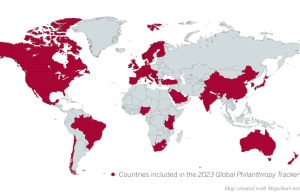There are more than 100,000 registered nonprofits within The Sunshine State, and Strength in Numbers: The 2023 Economic Impact of Florida’s Nonprofits, a report from the Jacksonville, Florida-based Florida Nonprofit Alliance, boosts the contributions more than 22,000 of them make to the state’s economy.
The Florida Nonprofit Alliance analyzed organizations that had filed a Form 990 within the most recent four years, generated annual income of $50,000 or more and self-reported as 501(c)(3), 501(c)(4), 501(c)(5), or 501(c)(6) nonprofits. The 22,710 nonprofits that met these criteria employed 456,881 individuals — more than the 408,086 employed by the manufacturing sector – paid average annual wages of $60,323 — nearly double the $33,951 earned annually, on average, by those employed within leisure and hospitality — and overall pushed nearly $27.6 billion in wages into the Florida economy.
During 2022, Florida nonprofits generated $116.5 billion in revenue, up 21% from the previously measured level. The state’s top three counties – Miami-Date, Palm Beach and Orange – accounted for 30% of that. Similarly, the $255.4 billion in total net assets among nonprofits analyzed represented a 28% gain over previous levels, and the $160.3 billion in income was 23% higher than reported in the 2020 report.
There is room for improvement within those numbers. As the report authors note, the state’s nonprofit revenue per 1,000 households ranked 48th within the United States. “Our open aim from these reports is to make sure people understand that with the growth we’re having as a state, which is now somewhere around 1,200 people per day who choose to move here, the sector has to keep up and it currently is not,” Florida Nonprofit Alliance President and CEO Sabeen Perwaiz told The NonProfit Times.
The shortfalls are especially apparent where the boost in nonprofits’ fortunes was not evenly distributed. Regional shifts in nonprofits’ fortunes reflect a variety of factors. In the Florida Nonprofit Alliance’ last report, the organization looked at data as of March 2020, right before the impact of the coronavirus pandemic. Nonprofits’ resultant struggles and changes in needs led to closures, mergers, openings and other shifts. In the Northeast region (as defined by the Florida Department of Economic Opportunity), the number of nonprofits fell by 9%, to 1,832, while the neighboring East Central region saw a jump of 13% in the number of nonprofits, to 3,918.
The analysis did not go into the whys of the changes, but Perwaiz, who lives in the Northeast region, was able to provide some inside perspective. “There were a lot of smaller nonprofits [within Northeast] that were listed [in the previous study] like PTA clubs, boosters, nonprofits that are no longer in operations but still have their 501(c)(3),” Perwaiz said. “So that is where the shift in numbers came from that in region.” Additionally, some nonprofits dropped off due to not meeting the various thresholds, such as income or Form 990 filing.
In the case of the Northeast region, additional data indicates the surviving nonprofits were strengthened through consolidation which made them more effective. Organizations in that region realized the biggest gains in revenue, which jumped 28%, to a total of $14.4 billion, and assets, which shot up by 52%, to $28.7 billion. In contrast, nonprofits within the Northwest region, which includes the Florida Panhandle, was one of two regions to experience a revenue drop. Northwest nonprofits saw their aggregate revenue fall by 5%, to just under $6.8 billion, while revenue for nonprofits in the South Central region slipped by 4%, to $115.8 million.
“The new report from Florida Nonprofit Alliance illuminates the tremendous impact nonprofits have in communities across the Sunshine State, not just through their individual missions but also collectively as an economic engine,” National Council of Nonprofits President and CEO Tim Delaney wrote in an email to The NonProfit Times. “Many members of our network produce these reports to help remind their communities and inform policymakers of that work and nonprofits’ broader impact on the economy.” Florida is one of 35 states, along with the District of Columbia, that produce regular (usually bi- or triennial) nonprofit economic impact studies.
Perwaiz cited another post-pandemic factor, not necessarily collected in the dollars-and-cents data, which has her alarmed. “Volunteerism has declined significantly within the state,” she said. “This was not unique to our state: it’s happening across the country. But that has been the biggest curveball that has come [nonprofits’] way. Even after reopening, the number of volunteers has not gone back up to where it used to be pre-pandemic.”
The report was created to showcase nonprofits’ economic impact, but Perwaiz pointed to an innovation in the current edition that highlights areas of need. The current edition includes ALICE data – county-by-county information on households that fall below the federal poverty threshold or are defined as asset limited, income constrained, employed.
Statewide, 45% of households fall below the ALICE threshold, with 2.6 nonprofits available to serve every 1,000 households. But the ALICE data revealed pockets of economic disadvantage, especially in the South Central, Northwest and North Central regions, where several counties reported percentages of households living below the ALICE threshold in excess of 60% – with comparatively fewer nonprofits than average to serve them.








